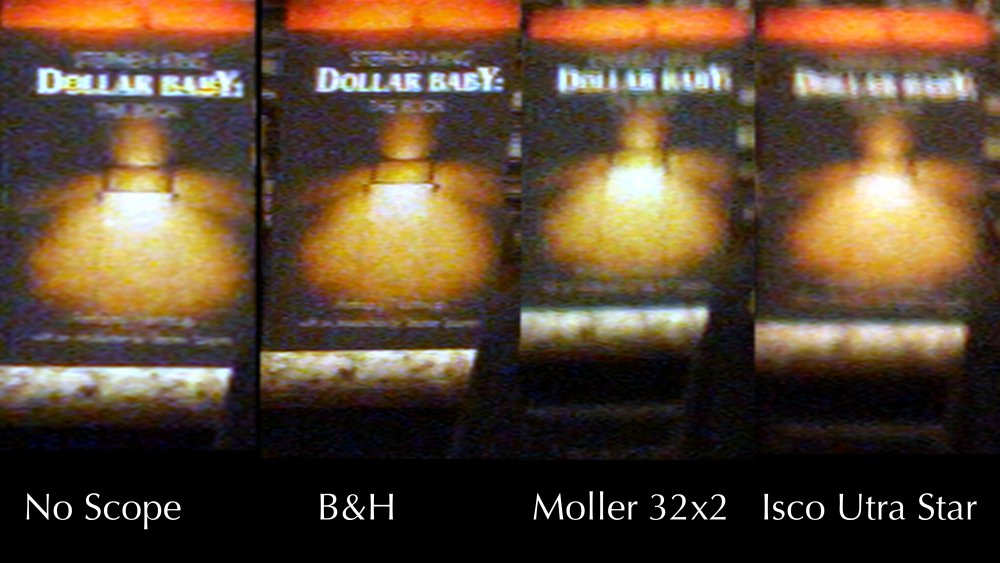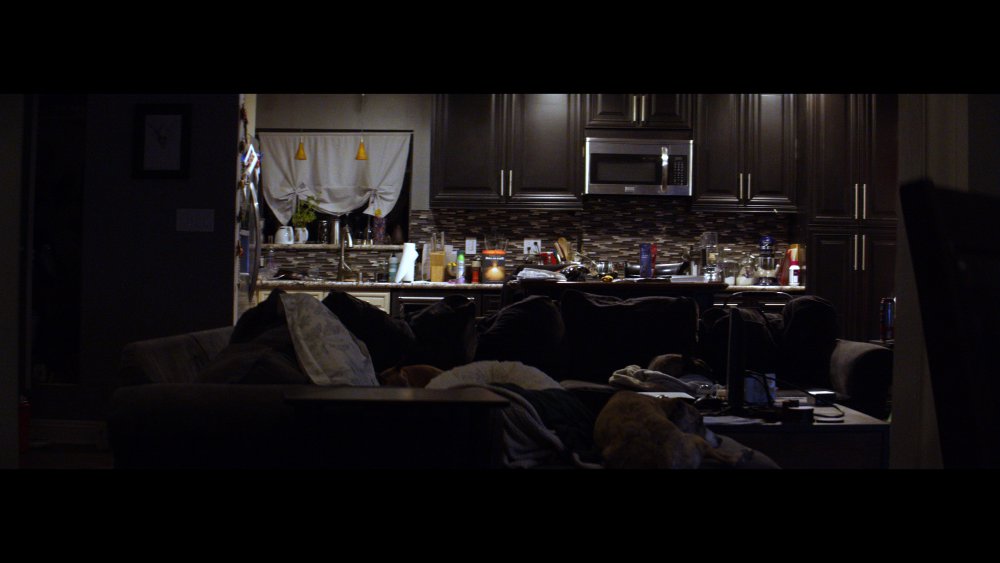Leaderboard
Popular Content
Showing content with the highest reputation on 03/14/2021 in all areas
-

Help me on an eBay hunt for 4K under $200 - Is it possible?
John Matthews and one other reacted to fuzzynormal for a topic
Oly em10iii owner for the past year. Can be had for less than $300 on eBay. Got mine refurbished “new” Was filming with it today for a gig, actually Nice camera all around. Fiddly with a few things, but really just a great value.2 points -
So as I'm getting ready to start shooting my micro budget feature, I decided to do a final test between those 3 scopes and a Voigtlander 40mm F2 as taking lens, wide open at F2. Well, I was surprised. I used the cover of a book at 40 feet. The scope I expected to perform the worst, in fact was the sharpest of all three. I could read the title from 40 feet away. Here are the picture.1 point
-
Z-cam looks to be here to stay. There were rumors of shortages of the processor Z-cam uses, but their entire product line is in stock at BH Photo except for the original E2. Z-cam also looks to be introducing a competitor to the Red Komodo with the release of the Z CAM E2-S6G Super 35mm 6K Cinema Camera (Global Shutter) due in April. So, with what appears to be a stable company and expanding product line, it is worth taking a second look at the E2-M4 now that Z-cam has now released firmware 0.98.0 that enables Pro Res recording at all frame rates on the E2-M4. This includes 4k @ 120fps, 4K 2.4:1 @ 160fps & 1080p @ 240fps in Pro Res, so you don't have the overhead of decoding H265. A natural comparison is to the Blackmagic Pocket 4k, which has a few advantages: 1. 12bit BRAW 2. LCD Screen 3. SD Card Recording 4. $200 cheaper 5. AC to DC power supply included 6. About 1/2 lbs lighter Some of the E2-M4 advantages are: 1. 4k @ 120p and 4k 2.4:1 @ 160fps slow-motion recorded to Pro Res internally as well as un-cropped 1080p @ 240p for super-slow motion but it does line skip. 2a. Wireless video monitoring to iPhone or iPad (or both at the same time) with only 100ms delay, which better than many less expensive wireless HDMI solutions when you add the HDMI latency of the camera HDMI out. 2b. You can also plug in your iPhone into the USB C port via a cable and it will take the place of the wireless link and charge your phone at the same time as well as ensure a reliable connection. 2c. The app functions much like a real monitor with 1080p resolution, peaking, scopes etc as well as does camera control. 3. 5-pin Limo to dual balanced mic pre inputs with phantom power (adapter cable required) 4. Interchangeable lens mounts including a optional locking M4/3 mount as well as an EF or PL that can take their variable electronic ND (the M4/3 and M4/3 locking can not take the vari-ND) There is a mount with a built in speed booster. 5. Box camera so it is a better shape to balance on a gimbal. 6a. Different sensor than the Blackmagic Pocket 4k that does not have the magenta shift at when under exposing 6b. This sensor is significantly taller than the Pocket 4k sensor so it is much better for shooting anamorphic. 6c. The combination of difference sensor and Z-Cam color science and color profiles provide a different look and some will prefer it to the Blackmagic 4K. 7. Expanded ISO limits depending on your shooting mode up to 102,400 vs 25,600 of the Blackmagic Pocket 4k. 8. HDMI output can output up to 4k depending on the shooting mode. 9a. Large, more powerful, longer lasting battery options using the Sony L-Series. 9b. Power output from the camera to power a monitor. 10. Can shoot ProRes RAW via recording to the Ninja V. (not really an advantage if you use Resolve due to BRAW support) 11. Live streaming via Ethernet port. As they in Spinal Tap: these go to 11. For an extra $200, it is worth considering the Z-cam E2-M4, especially if you are a Final Cut Pro user, if you own an Ninja V, or if you own a Ronin S. Here's part 1 or a great 3 part review of the E2-M4 by Adam Wilt: https://www.provideocoalition.com/review-z-cam-e2-m4-mft-cine-camera-part-1/ Thanks! Mark1 point
-
Sony Semiconductor Readies a Wave of New Stacked Sensors
andrgl reacted to androidlad for a topic
Sony Semicon's Exmor RS line has now fully matured and will come in various sensor sizes - all 8K capable. One of the first to make the debut is a 45MP Micro 4/3 (MFT) sensor with 2.24um pixel size. More to follow.1 point -
R5 vs R6
ade towell reacted to Video Hummus for a topic
Here you go. 20 seconds straight from camera in clog. The only thing I did was strip out the audio and exported as ProRes HQ. Oh, it's also in a 2:1 aspect ratio but it was shot in 4K DCI. https://www.dropbox.com/s/y9m9mg6g10ddkfq/R5_4KHQ_4KLQ.mov?dl=01 point -
Help me on an eBay hunt for 4K under $200 - Is it possible?
IronFilm reacted to Avenger 2.0 for a topic
Prices are just too high at the moment. Difficult to do a good deal at the moment (even second hand).1 point -
I got an S1H before lockdown, it's not been used a lot but will pay for itself in some time. I've been on the Red Komodo pre-order list for 4 months or so with no word. TBH I may cancel it as work is light. I'll see how I feel when i finally get the "do you want to complete your order sir?" call... The S1H for me is like a baby Alexa, such a good image. But I prefer Komodo post pipeline due to the raw codec. That's it though, TBH the S1H is better for everything else. Maybe I will cancel it TBH, seems like there's little benefit at the moment.1 point
-
The Isco Ultra Star should be a lot sharper. Maybe you got a bad copy that needed to be tuned up?1 point
-

Nikon 8K mirrorless camera (Sony A1 clone)
TomTheDP reacted to Andrew Reid for a topic
Exactly, why should the A1 have a monopoly in this niche. Nikon should invent their own technology and try and compete against it.1 point -
Help me on an eBay hunt for 4K under $200 - Is it possible?
John Matthews reacted to newfoundmass for a topic
I got my GX85 for for well under $200 after selling the cheap Olympus zooms that came with it. I'm actually quite surprised how well the value of Panasonic cameras have held. You can get $450 for a used G7 body only, which is wild when you consider its been on sale for the last 2 or 3 years with two lenses for under $600. The GX85 is arguably the best value out there on the second hand market if you're in need of 4K though the prices have gone up since I bought mine. The IBIS is clutch! The Zcam E1 is quite difficult to find here in the US used. And the Yi M1 is more expensive than some of the GX85 on eBay! Cheapest is $380! I remember the M1 being rubbish even though it used the same sensor as the GH4.1 point -
I actually think they have one of the best naming conventions in the whole industry. All the cameras are in the E2 generation, but M4 is m43 4K, S6 is s35 6K, F6 is FF 6K, and F8 is FF 8K. Compare that to a7siii, FX3, C70, etc. when trying to judge specs at a glance. Even Blackmagic's convoluted naming at least lets you know what the cameras offer 😅1 point
-
What am I doing wrong? - James Miller CLOG3 help
kye reacted to Dave Major for a topic
HI Kye, thanks for getting back to me. I guess I was expecting these luts to atleast get it close to a 'normal' colour space but they don't seem to be doing that. I'll continue to experiment and maybe just make my own preset for future use D1 point -
Fair enough Tim, but the opposite POVs expressed here between 'business craft' and 'art craft' (not a trading mark of the gaming industry for sure LOL) don't necessarily mean every filmmaker will have to run the whole steps of the career to succeed and see the outcome popping up. The same way a filmmaker is the one able to have 'product' 'to be published', no matter where he/she is coming from. Especially today along the digital age. There is world in the lens-based media outskirts. Lots of 'digital filmmakers' get outstanding achievements without the old school standards. A lot has changed. Let alone with the streaming now. As @barefoot_dp adequately nailed and clearly illustrated from those words above-posted, I just can't stand that shooting ad nauseam in a daily basis is a much faster learning curve for this craft/business/industry/art/whatever we want to do or call it : ) Shooting is just a part of the process, filmmaking is much beyond to have a camera setup in hands (E :- )1 point
-
Business as meaning of activity, craft, occupation, industry... If industry is often connected with profit, art is broader, I believe. Profit is usually the last purpose of making art.1 point
-

Are Sony sensors ruining video with the 'Sony look'?
majoraxis reacted to pixelpreaching for a topic
I don't consider it one, it IS one. So is the Varicam, Sony FX9/Venice, EVA-1. Despite what people claim, the a7SIII and FX3 are NOT dual native ISO. They are dual gain. As is the RED Gemini. Basically, dual native ISO is that there are two actual circuits underpinning each photosite and it will switch between them. With dual gain, the process is happening in a second ADC, but each photosite still has only one circuit.1 point -

How many 'films/videos' do you 'publish' per year?
greenscreen reacted to Emanuel for a topic
1 point





